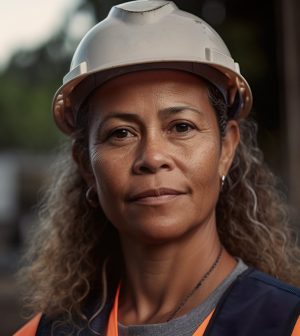- Navigating Your Midlife Crisis: Embracing New Possibilities
- City Raccoons Showing Signs of Domestication
- Mapping the Exposome: Science Broadens Focus to Environmental Disease Triggers
- One Week Less on Social Media Linked to Better Mental Health
- Your Brain Changes in Stages as You Age, Study Finds
- Some Suicide Victims Show No Typical Warning Signs, Study Finds
- ByHeart Formula Faces Lawsuits After Babies Sickened With Botulism
- Switch to Vegan Diet Could Cut Your Greenhouse Gas Emissions in Half
- Regular Bedtime Does Wonders for Blood Pressure
- Dining Alone Could Mean Worse Nutrition for Seniors
Americans of Pacific Island Ethnicity Have Up to Triple the Rate of Cancer Deaths

Native Hawaiian and other Pacific Islander people have cancer death rates that are two to three times higher than they are in whites, new data shows.
The first-of-its-kind report, issued by the American Cancer Society (ACS) on May 1, focuses solely on the cancer risk of Americans who’ve descended from regions along the Pacific Rim, the ACS said.
Cancer is the second-leading cause of death overall in the United States, behind heart disease.
But cancer is the leading cause of death for U.S. residents of Chinese, Filipino, Korean and Vietnamese descent — one of many variations in cancer occurrence noted in the ACS report.
The report, titled Cancer Facts and Figures for Asian American, Native Hawaiian, and Other Pacific Islander People, 2024-2026, also found that:
-
Lung cancer is the leading cause of death in men of every Pacific Rim ethnic group, including Asian Americans, Native Hawaiians and other Pacific Islander people
-
Lung cancer is the leading cause of cancer death in women who are Chinese, Japanese, Vietnamese, Korean and Native Hawaiian
-
Breast cancer is the leading cause of cancer death in Guamanian, Samoan, Filipino and Asian Indian women.
-
Even though Asian Americans have a 40% lower overall cancer death rate than whites, deaths from liver cancer are nearly 40% higher and deaths from stomach cancer are twice as high.
There are many different reasons behind these variations in cancer risk, said lead report author Nikita Wagle, principal scientist for cancer surveillance research at the ACS.
“These populations, specifically Asian Americans, consist of many ethnic groups that are diverse in terms of immigration patterns, behavior, exposures in countries of origin and social determinants of health,” Wagle said in an ACS news release.
“Additionally, the use of screening and other preventative services varies between these groups,” due to health care disparities, Wagle said.
For example, only half of breast cancers are diagnosed at an early stage in Guamanian, Samoan, Pakistani, Tongan, Laotian and Hmong women, compared with two in three white women and three out of four Japanese women.
This is likely due to a lack of access to care, ACS researchers concluded.
“We hope that these startling disparities will spur local communities and health care providers to increase awareness of cancer symptoms and opportunities for cancer prevention and early detection through screening,” said senior author Rebecca Siegel, senior scientific director of surveillance research at the ACS.
The term “Asian” refers to a person with origins in the Far East, Southeast Asia or the Indian subcontinent, the report says. This group includes, but is not limited to, Asian Indians, Cambodians, Chinese, Filipinos, Hmong, Japanese, Koreans, Pakistanis, and Vietnamese.
Meanwhile, the term “Native Hawaiian and Other Pacific Islander” (NHPI) refers to people with origins in Hawaii, Guam, Samoa, Tonga or other Pacific Islands throughout Polynesia, Micronesia and Melanesia.
About 24 million Asian American and 1.7 million Native Hawaiian and Pacific Islander people live in the United States, representing about 8% of the population, the report says.
Aside from multiracial people, Asian Americans are the fastest-growing population in the United States, the report says. Their numbers are expected to double between 2016 and 2060, mostly through immigration.
“It’s essential that we acknowledge the diversity of the Asian American and NHPI population. Consideration of cultural appropriateness, translation into native languages, improved access to healthcare and patient navigation could help increase knowledge and uptake of cancer screening and preventive services,” said Dr. Ahmedin Jemal, senior vice president of surveillance and health equity science at the ACS.
“Further research is also needed among the ethnic groups of this highly diverse population to better understand the cancer burden and help save lives,” Jemal added.
More information
The U.S. Centers for Disease Control and Prevention has more on health equity in cancer.
SOURCE: American Cancer Society, news release, May 1, 2024
Source: HealthDay
Copyright © 2025 HealthDay. All rights reserved.










